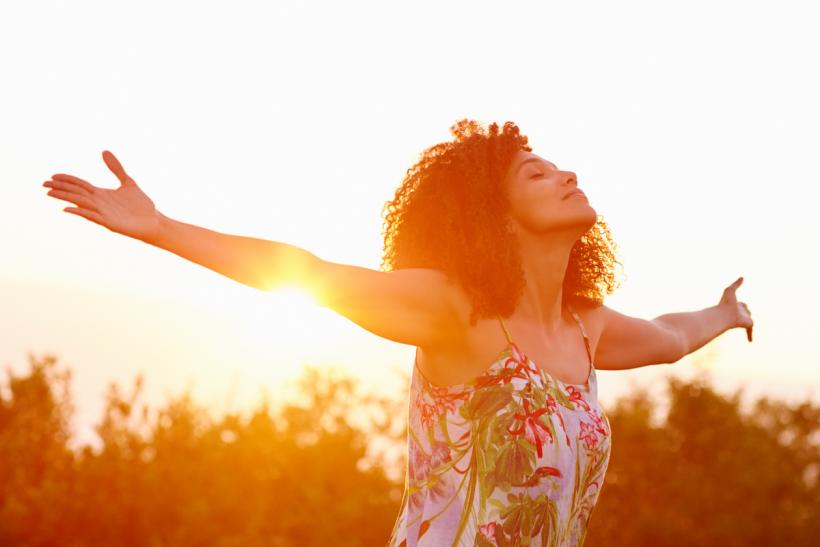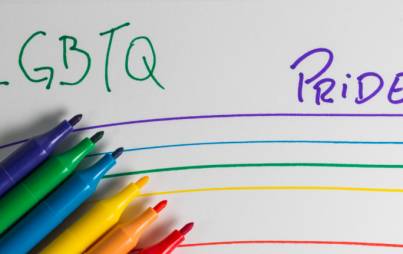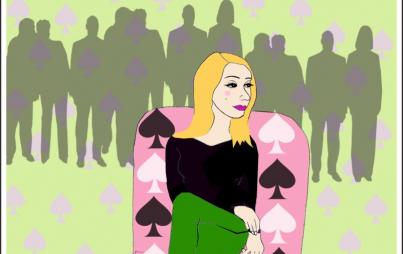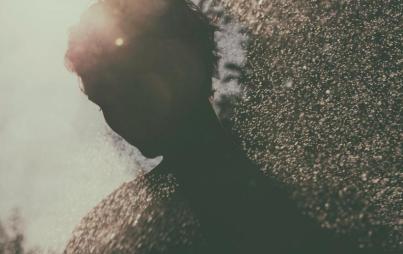
Realizing I wasn’t alone provided me with the validation I needed to embrace my sexual orientation.
Oh Hey! It’s Asexual Awareness Week!
Don’t worry. If you’re asking yourself, “what’s asexuality?” you’re not alone!
Simply put, asexuality is a sexual orientation in which a person does not experience sexual attraction to others. “Asexual Awareness Week is an international campaign that seeks to educate about asexual, aromantic, demisexual, and grey-asexual experiences and to create materials that are accessible to our community and our allies around the world.”
Especially in a world where sex is literally everywhere (ahem – politics, TV shows, THE INTERNET), asexuality is an often invisible, misunderstood, and ignored sexual orientation. The best way I know to contribute to changing this, both to help those who are questioning their orientation and to educate all people about asexuality, is to continue advocating for visibility, teaching others, and sharing my experiences.
So, if you’re out there in the world feeling broken, and questioning if you’re the only one who doesn’t “get it”, or if you’re eager to learn more about asexuality so you can be a better ally to the LGBTQIA+ community, here are three things that helped me claim and learn about my asexual identity:
1. The internet.
I learned about asexuality on the internet. Literally. I watched the documentary A(sexual) with my best friend, and I instantly connected to the experiences that the individuals in the film shared. Before that, I’d only heard the term “asexual” once, and what I recall of that experience is that it was used in a very negative and accusatory tone.
After seeing the A(sexual) film, I started reading everything I could find online about asexuality because I felt like I needed more information — I had so many unanswered questions! Soon I learned that I wasn’t alone with my feelings, my uncertainty, or my questions. There were lots of people wondering about what “qualifies” as being asexual, and if that’s even a valid or real thing.
Just so you know, it is — it’s totally real.
Realizing I wasn’t alone provided me with the validation I needed to embrace my sexual orientation. There are countless resources online that helped me learn more about the incredible diversity of asexual identifying people, the intricacies of the asexual community, and also more about myself. Here are some of my favorites:
- Concept Awesome
- Asexuality Archive
- Asexual Visibility and Education Network (AVEN)
- The Asexual Agenda
2. Labels.
Most asexual people share that rather than “realizing” they were asexual, they discovered the asexual label, and found that it applied to them. Except, I’m not a labels person; I hate being boxed in. And so, identifying as asexual, and ascribing to the asexual label was a pretty big thing for me! Labels are too often abrasive, exclusive, and limiting.
For example, the terse definition of asexuality even had me wondering, “Am I still asexual if...?” And because the commonly-held definition of an asexual person — “someone who does not experience sexual attraction“— is sometimes too limiting, I felt better about the asexual label when I starting thinking about asexuality as a spectrum. And, in claiming my asexual identity I learned that labels don’t have to be prescriptive or restrictive.
Labels can be useful, productive tools to help us have conversations about ourselves and across differences. The asexual label helped me explain my experiences with sexuality – especially to people who really didn’t get it. The asexual label helped me find a place in the LGBTQIA+ community — a community within which I always felt like I belonged, but previously only as a fervent ally.
3. Coming Out.
When I first started thinking about coming out, I was really hesitant about it. I didn’t even know why or if I had to come out. It didn’t seem relevant. I was scared that I would face judgment and disbelief. I feared exclusion from the LGBTQIA+ community. I feared that folks would use my previous behaviors as ammunition to undermine me and how I identify.
Slowly, I started talking more about asexuality with close friends, and rather than judgment or disbelief, instead I faced many questions, and eagerness to know more. Sometimes those questions were intrusive or felt slightly critical, but overall the experience allowed me to have important, meaningful conversations, and further explore what asexuality means to me, and how it impacts my life.
To me, coming out as asexual is about awareness, acceptance, and cohesiveness. It’s about searching for and finding belonging. Embracing this perspective, and feeling confident about me and my identities was inexplicably valuable and empowering!
When it comes to asexuality, the bottom line is this: most questions can be answered with “some do, some don’t”. Behavior does not have to dictate orientation, as asexuality is about how someone feels not what someone does. Understanding various sexual orientations beyond your own can help you be a better ally to folks in the LGBTQIA+ community. So, if you’re still wondering about asexuality, I’d encourage you to learn more!








